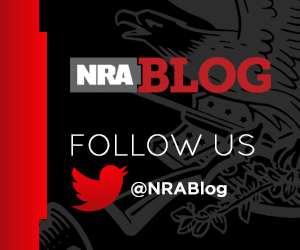Gallery

1 of 1
John Brown’s Fort
Back in 1859, abolitionist John Brown led a raid against the federal armory in Harpers Ferry, VA (now West Virginia), in an attempt to start an armed slave revolt. When we designed the NRA National Firearms Museum twenty years ago, our intent was to present our collection in a historical context. One special case concept for the American Civil War was to house a Northern arms factory within “John Brown’s Fort” inspired by the original up at Harpers Ferry. Inside we placed the carbines, rifles, and handguns that the North brought to the conflict. One of our best supporting artifacts was one of the 200 Sharps M1853 carbines that Brown received in boxes marked as bibles.

1 of 1
Russia America Fur Co. Percussion Musket
Guns often have neat stories and this one is no exception. This particular example intertwines hunting, Russia, Alaska, and Native Americans together in an interesting way. In 1799, Russia's Tsar granted a charter for the Russia America Company to gather furs in Alaska. Using Native Americans as hunters, the Russia America Company began operating in northern Alaska and down the west coast to California. Recognizing the superiority of muskets over bows and arrows, this converted example was made at Tula Arsenal, Russia, in 1830. It bears the Russian crest and a Russia America Company number of 8103. In 1867, when furs became scarce, the Russia America Company sold its holdings to the United States.

1 of 1
Mauser Model 1934 Pistol
Made in Oberndorf, Germany – the Mauser Model 1934 was the last version of the 7.65mm handgun design that was brought into production in time for WWI. By the time WWII was in play, the pistol was losing ground to designs like the Walther PPK and its brother, the Mauser HSc. Small pocket-sized pieces were worn as symbols of rank by officers in German military and law enforcement branches. An important feature in the M1934 was the cocking indicator at the rear of the slide.

1 of 1
Mauser HSc Pistol
The Mauser HSc pistol was highly sought after during the Second World War as evidenced by the German War Ministry contracting a full production output of the model. A sleek double-action pocket pistol in 7.65mm (.32), the HSc has a hammer that is almost completely concealed by the slide. Nearly a quarter million were built before the end of the war in 1945.

1 of 1
Ad Topperwein’s Colt
This custom Colt belonged to Texan Adolph (better known, “Ad”) Topperwein a.k.a. the “Texas Triggerman," a shooting wizard, touring with his wife, “Plinky” – who was no slouch in the shooting game herself. Fitted with bone grips and a Pachmayr grip adapter, this target-sighted Colt Officer’s Model .38 represented a handgun with far better sights than were available on the usual double-action revolvers of the day. From handling this piece, we can also state its trigger pull is definitely in the Colt Custom Shop “Python” class – very, very smooth.

1 of 1
Winchester Model 1885 Competition Rifle
Winchester’s single-shots were usually set up for rimmed cartridges for easier extraction, but this Winchester 1885 is chambered for the .30-06 and features an unusual cork forend finger rest. There were 20 other rifles in this configuration produced for the Big Bore Rifle Team of Butte, MT – but any .30 caliber rimless “High Wall” Winchester is a rare bird in original factory configuration.

1 of 1
Pieper Revolving Rifle
The Belgian Pieper revolving rifle was an unusual arm, firing 8mm bottle-necked rounds that were moved forward with the cylinder towards the back of the barrel, creating a good gas-seal at the breech. Not many of these nine shot revolving guns were manufactured in the 1890s, but we know where this one wound up, as it has Mexican military markings.

 More Like This From Around The NRA
More Like This From Around The NRA



